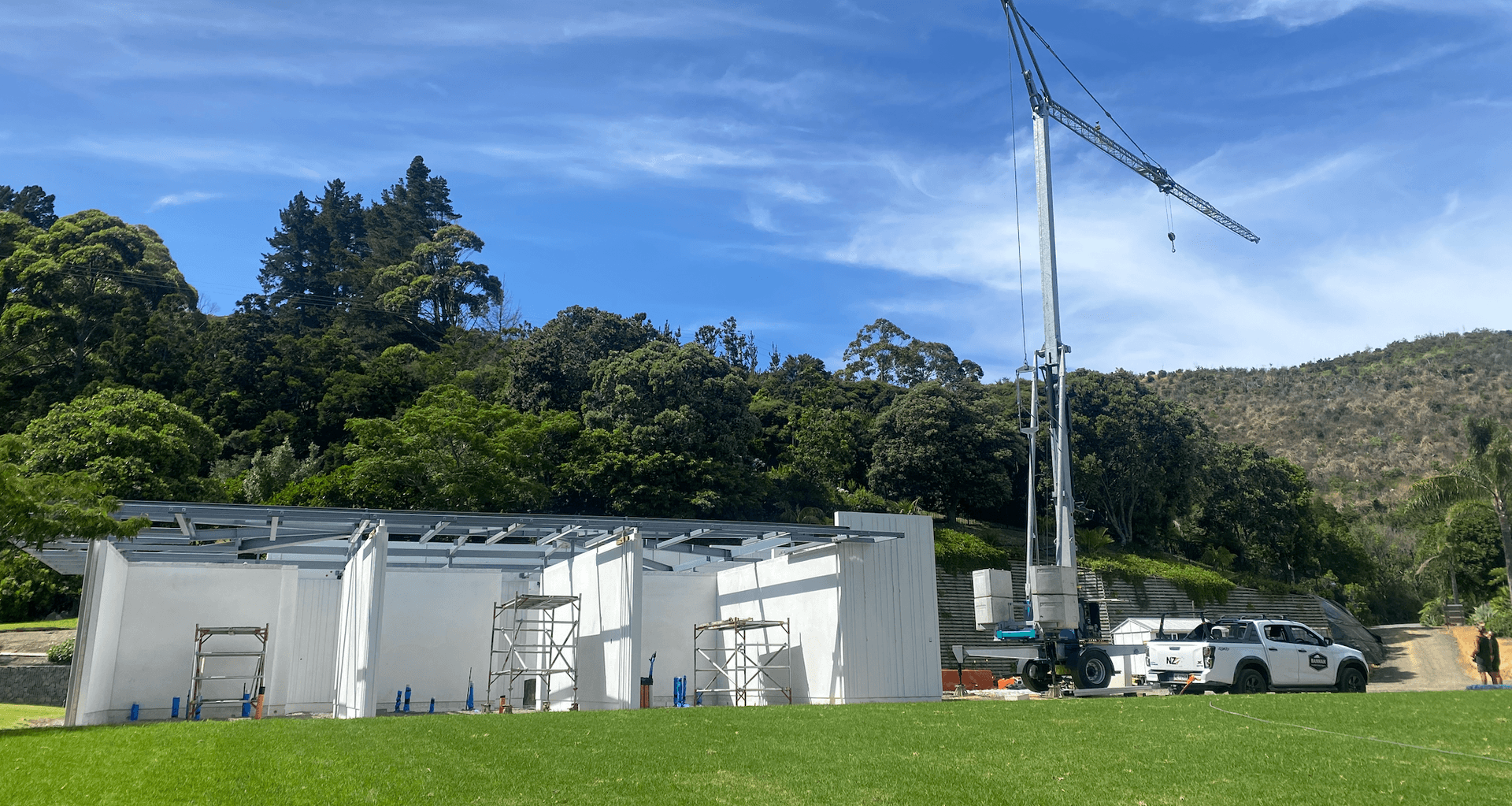Top 3 reasons you need a self-erecting crane on-site
Written by
14 May 2024
•
5 min read

What is a self-erecting crane?
To comprehend the significance of self-erecting cranes, it's essential to understand their functionality. Unlike traditional tower cranes or mobile cranes, self-erecting cranes boast a unique design that combines mobility with vertical reach. Picture a slender, towering frame that ascends swiftly, easily reaching over buildings yet requiring minimal ground space. Once erected, these cranes offer a compact footprint, typically occupying only a four-square-meter platform.
Ross Bannan, Director of Bannan Cranes, explains, “A smaller, more mobile site tower crane differs from a mobile crane. A self-erecting crane has a smaller base platform and increased angle. It can go up and over the build more efficiently. It has a 16-square-metre platform, as opposed to a truck's approximate 90-square-metre platform and a boom on an angle.”
We have found the cranes help our customers win contracts, as they can lower their tender costs and timeframes.
Inspired by the success in Europe and driven by a vision to enhance construction methodologies here in New Zealand, Bannan embarked on a journey to bring these innovative cranes to our shores. Recognising the inefficiencies inherent in traditional construction systems, Bannan sought a solution that was easily operated and highly effective.
“In the early 90’s, I spent time all around Europe and saw these self-erecting cranes everywhere. Later in my career, I thought these would be ideal for my business, so in 2012, I purchased my first easily assembled Cattaneo Cranes self-erecting crane,” says Bannan. “I thought these cranes could assist with my construction firm; others were on the market, but they were very complex to set up. I wanted a crane that I could operate easily."
Bannan’s journey led to a partnership with Cattaneo Cranes from Milano, Italy. What began as a venture to improve internal operations soon evolved into a broader mission to revolutionise national construction practices.
“These cranes transform the way construction sites operate and offer many benefits that streamline the building process and enhance economic viability,” says Bannan.

Top 3 benefits of a self-erecting crane
1. Reduced labour costs
The impact of a self-erecting crane is centred on the significant reduction in labour requirements and construction costs. In a landscape with considerable labour rates, the ability to minimise the workforce while maximising productivity becomes a competitive advantage.
“Once you have one on-site, you adapt your building style to use it to its full potential. It removes the need to schedule the site. You don’t have to wait for cranes to arrive; your schedule no longer revolves around other contractors,” says Bannan.
"Our cranes are ideal for most sites, with nine different models available, reaching from 21–41 metres and lifting capacities ranging accordingly. Easily lifting product around the site all of which saves time and effort. Turning a multi-person effort into a one-person lift with no effort reduces costs and risk of injury," Bannan adds.
In addition to labour savings, self-erecting cranes optimise space utilisation on construction sites. From storing materials efficiently to facilitating the installation of glazing and joinery units, every aspect of the building process is streamlined. Its versatility extends to tasks such as excavation, where its vertical reach allows for innovative solutions like utilising the crane's height for long pile cages.


2. Increase productivity
Self-erecting cranes enable construction companies to operate on their schedule, free from external dependencies such as crane availability constraints. This flexibility translates into faster project completion, allowing clients to move into their homes sooner and minimising holding costs.
Moreover, the use of self-erecting cranes optimises logistics on construction sites. Quiet and electric powered, these cranes facilitate the efficient unloading of materials directly to their point of use. The crane's precise lifting capabilities ensure seamless operations, whether structural steel, joinery units or building supplies.
“Our cranes are ideal for small sites and sloping sites. They can lift windows and glass into position and benchtops to save time,” says Bannan.
“We can lower the scaffolding early and use a man cage for all sorts of external works, allowing the build to progress without delays from bulky scaffolding. We often use the crane to cover certain site areas with tarps when trying to keep an area dry for housing valuable timber or to keep the site dry while working.”


3. Income and tax benefits
Perhaps the most compelling aspect of self-erecting cranes is their economic possibility. Through a combination of weekly hire fees and tax depreciation benefits, these cranes pay for themselves within a concise timeframe. For construction companies, they represent not just tools but investments that yield long-term dividends.
“We sell NZ-certified cranes ready to go with everything a site needs, from the log book to lifting gear, and work alongside the build teams to optimise the crane's use. We’re always available for advice and enjoy the involvement with each crane supplied,” says Bannan.
“We have found the cranes help our customers win contracts, as they can lower their tender costs and timeframes.”
Self-erecting cranes exemplify the marriage of technology and construction, offering a glimpse into the future of building. With each project completed more efficiently and economically, the impact of these cranes reverberates across the industry, setting new standards of excellence and pushing the boundaries of what's possible.
“I would say 25 per cent of the time, we have the client buy the crane for the builder, and then the builder buys it off the client at the end of the build after witnessing what it can do for their project outcomes,” says Bannan.
For more information on Self-erecting Cranes and pricing, contact Bannan Cranes on ArchiPro.
